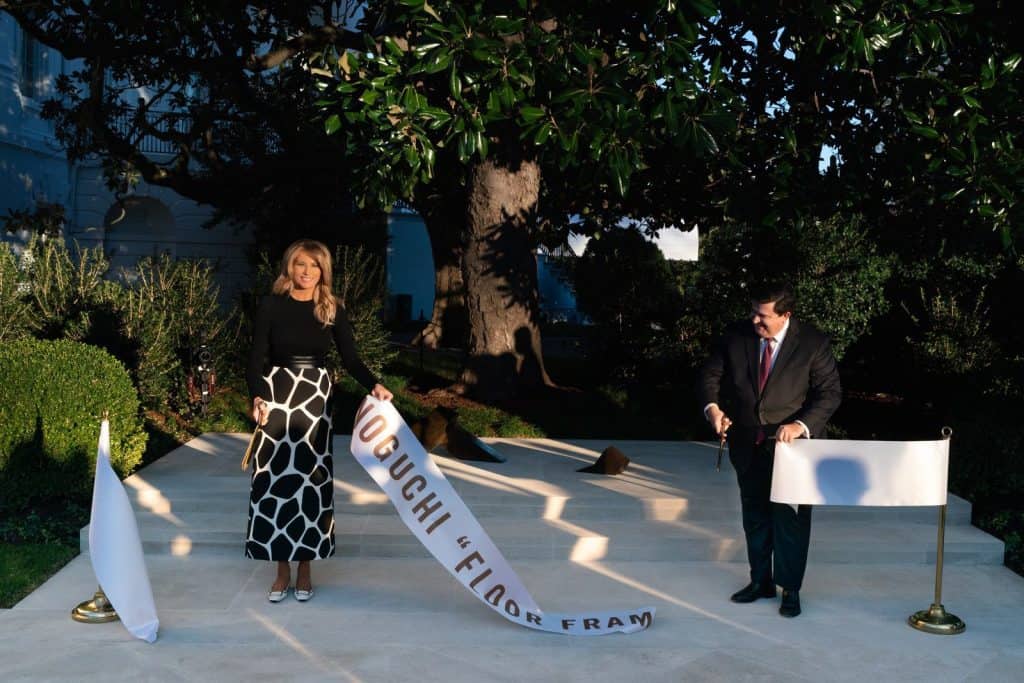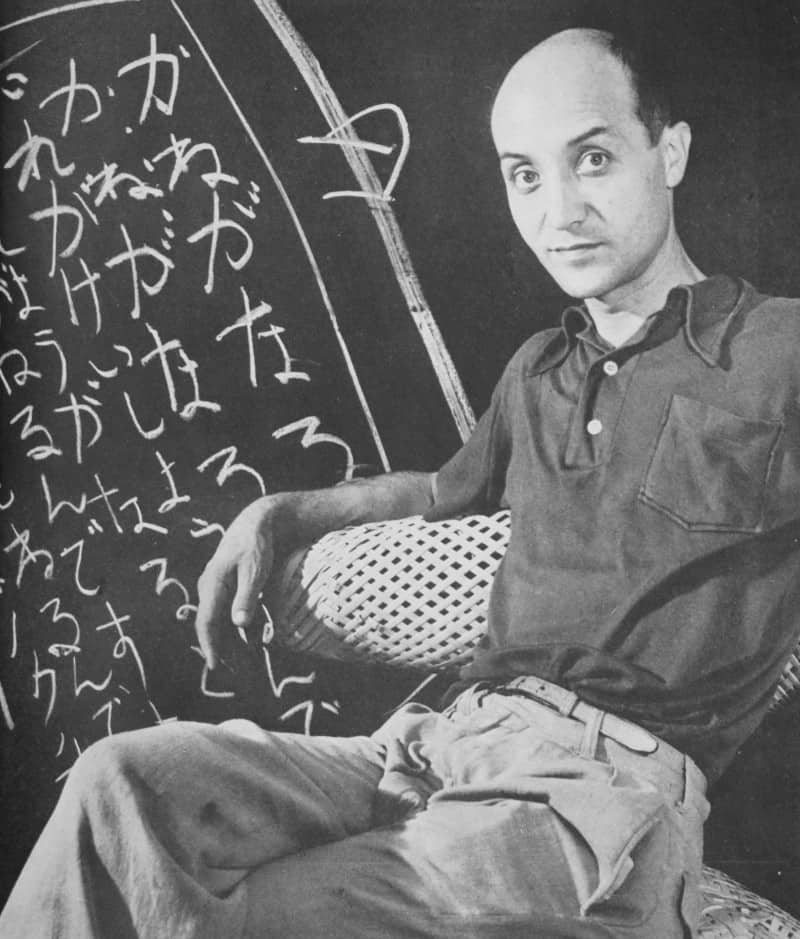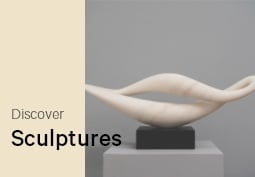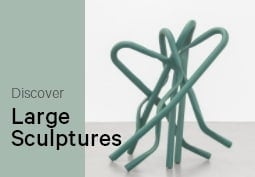Articles and Features
A New Addition To The White House Collection: Isamu Noguchi’s Floor Frame

By Shira Wolfe
“Thinking of the floor, I made Floor Frame. I made many other pieces in relation to floor space at that time, but this seemed to best define the essentiality of floor, not as sculpture alone but as part of the concept of floor”.
Isamu Noguchi
On 20 November 2020, just two weeks after what was arguably the wildest US election in history came to a close, announcing Trump’s defeat and a Biden-Harris presidency, Melania Trump unveiled Floor Frame (1962), a sculpture by Japanese-American sculptor Isamu Noguchi, in the White House Rose Garden. It’s the first artwork by an Asian-American artist to be included in the White House collection. We take a look at the piece and what it means for a Noguchi to be in the White House, and also examine the legacy of the great Japanese-American sculptor.

Isamu Noguchi’s Floor Frame at the White House
Isamu Noguchi’s Floor Frame (1962) is an abstract bronze piece with black patina, cast in two parts. The purchase was suggested by curators of the White House Collection and made with funds from the White House Historical Association for $125,000 at a Sotheby’s auction in March.
The Noguchi Museum offers a quote by the sculptor reflecting on this piece: “Thinking of the floor, I made Floor Frame. I made many other pieces in relation to floor space at that time, but this seemed to best define the essentiality of floor, not as sculpture alone but as part of the concept of floor.” In addition, according to a White House statement, Noguchi intended the piece to represent the intersection of a tree and the ground, reflecting the qualities of a root system and the canopy of a tree. The White House statement continues: “In order to reconnect viewers to the planet, he envisioned the sculpture placed directly on the ground.” The abstract piece was installed on the White House Rose Garden’s white concrete floor. One large beam seems to disappear into the ground, while a smaller piece appears to rise up again from the white concrete.

Responses to the Unveiling of Floor Frame
In a statement, outgoing First Lady Melania Trump said that Noguchi’s Floor Frame highlights “the beautiful contributions of Asian-American artists to the landscape of [the United States].” Her statement and the unveiling were met with quite cynical remarks given both the timing of the event – coinciding with Trump’s refusal to concede the presidency to Biden – and the fact that Trump has at times declined to categorically condemn the internment camps where Japanese Americans were forced into in the aftermath of the attack on Pearl Harbor.
Yet according to Brett Littman, the director of the Isamu Noguchi Foundation and Garden Museum in Long Island City, Queens, the placement of the Noguchi sculpture in the White House is a milestone. In his words: “Unfortunately it comes at a complicated moment. But the key for us is that this will be on display in perpetuity at the White House. Administrations come and go, but artwork remains. We do feel proud, and we think Noguchi would feel proud as well.”
Stewart McLaurin, president of the White House Historical Association, said that “Noguchi’s inclusion in the White House Collection is a worthy testament to his incredible life’s work and is a milestone in our efforts to ensure that American from all cultural backgrounds are represented.”

Isamu Noguchi’s Life and Legacy
Noguchi was born in Los Angeles in 1904 to an American mother and a Japanese father. He trained in France with the celebrated Romanian sculptor Constantin Brancusi in the 1920s and following the Japanese attack on Pearl Harbor in 1941, he became a political activist, dedicating himself to combat racism and raise awareness of the patriotism of Japanese-Americans. When the American government forced Japanese Americans into internment camps, Noguchi – who had been exempt from this – decided to spend time voluntarily in the Colorado River Relocation Center internment camp in Arizona. He remained there for six months, attempting to create a more humane design and set-up of the camp and organized workshops and lectures on Japanese art.
In his prolific career that spanned seven decades, Noguchi created countless abstract sculptures, as well as iconic pieces of design as his signature lamps, the Akari Light Sculptures. He also designed playgrounds and gardens, and sets for the world-renowned dancer and choreographer Martha Graham, in what was to become one of the greatest artistic collaborations of our time.
Noguchi’s life and work are now honoured at the Isamu Noguchi Garden Museum in Long Island City, New York, and at Moerenuma Park in Sapporo, Japan.
Relevant sources to learn more
Artistic Collaborations: Martha Graham and Isamu Noguchi
Out of the Ordinary: 10 collections that do something different
Other relevant sources
The White House Historical Association


